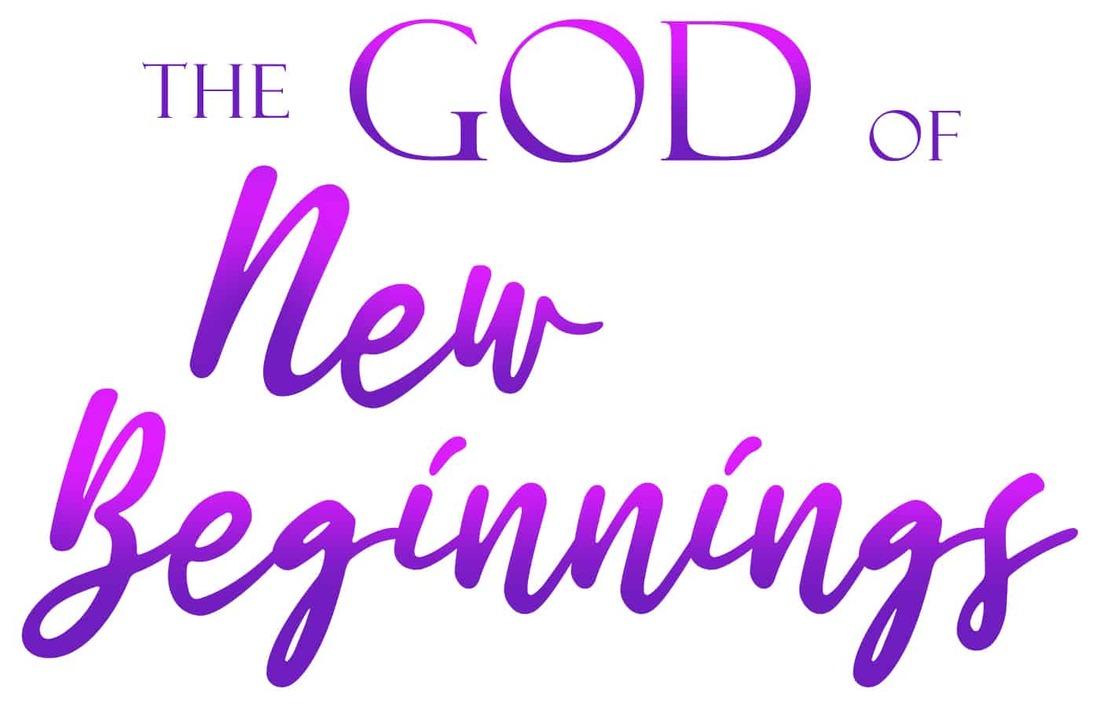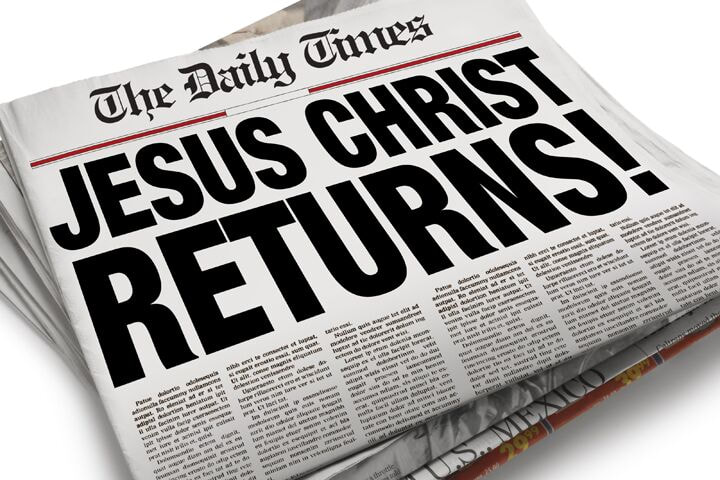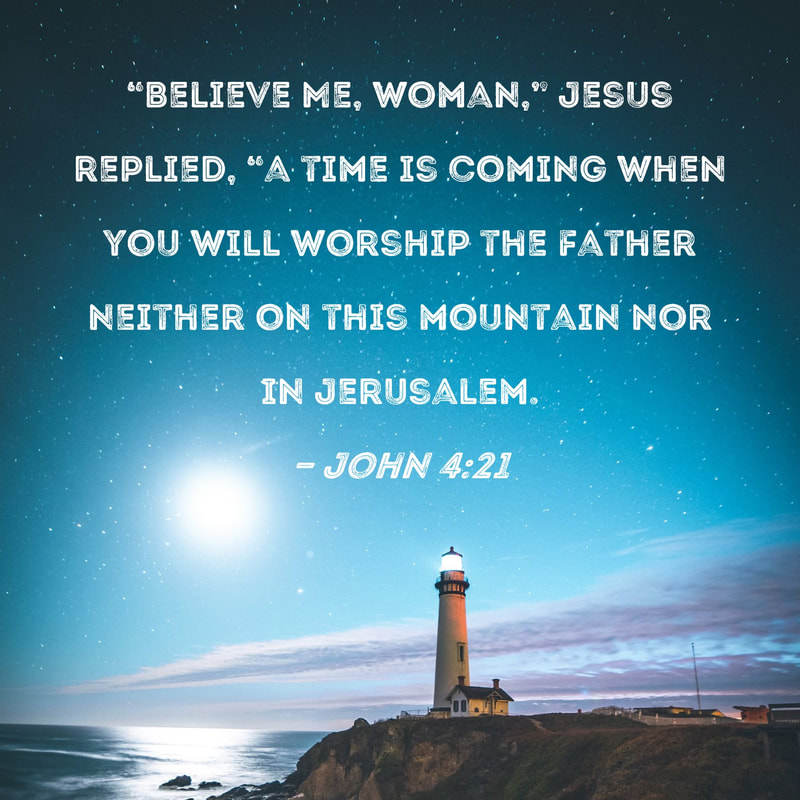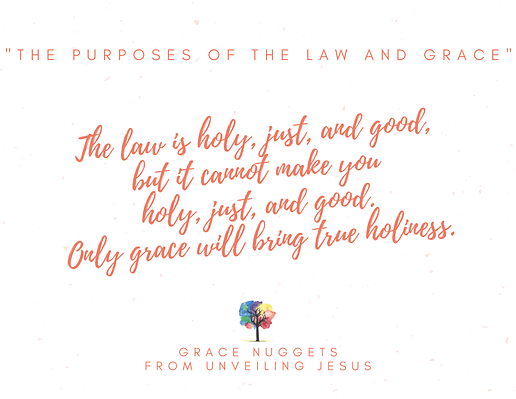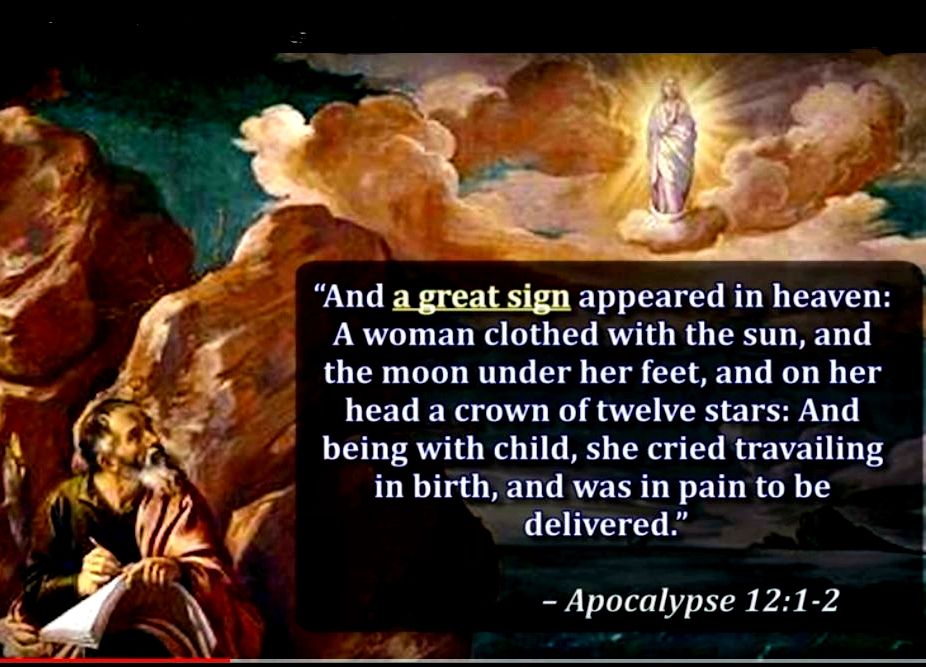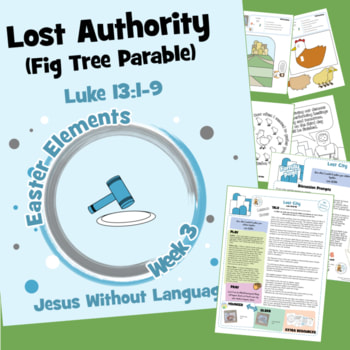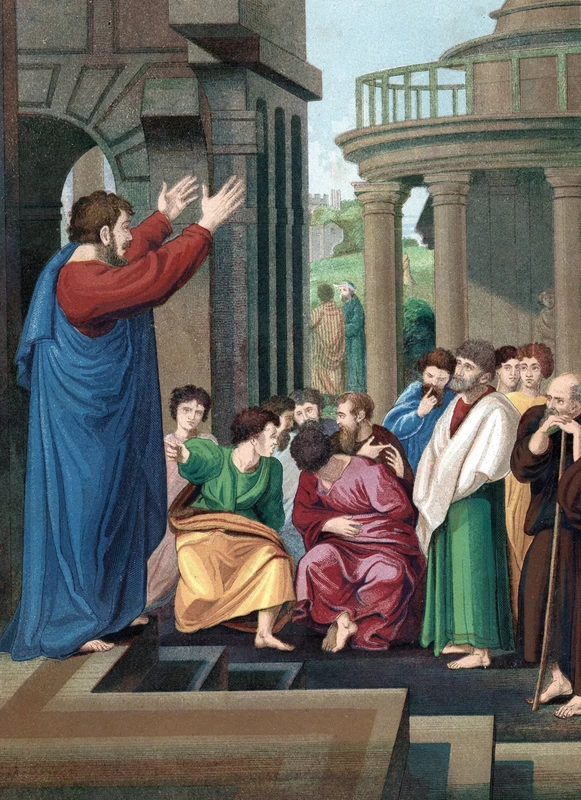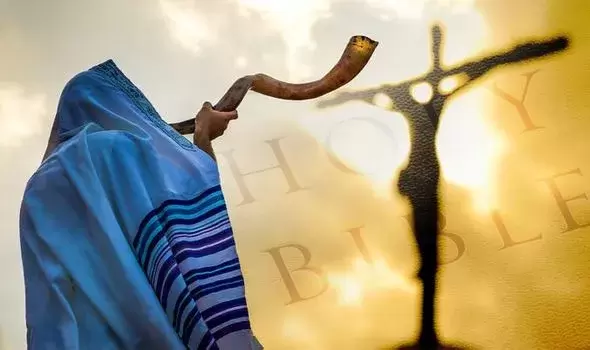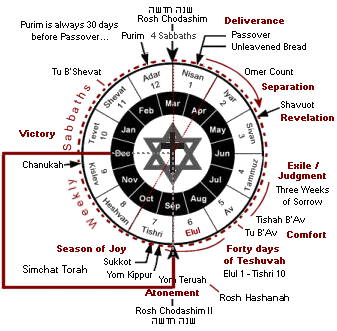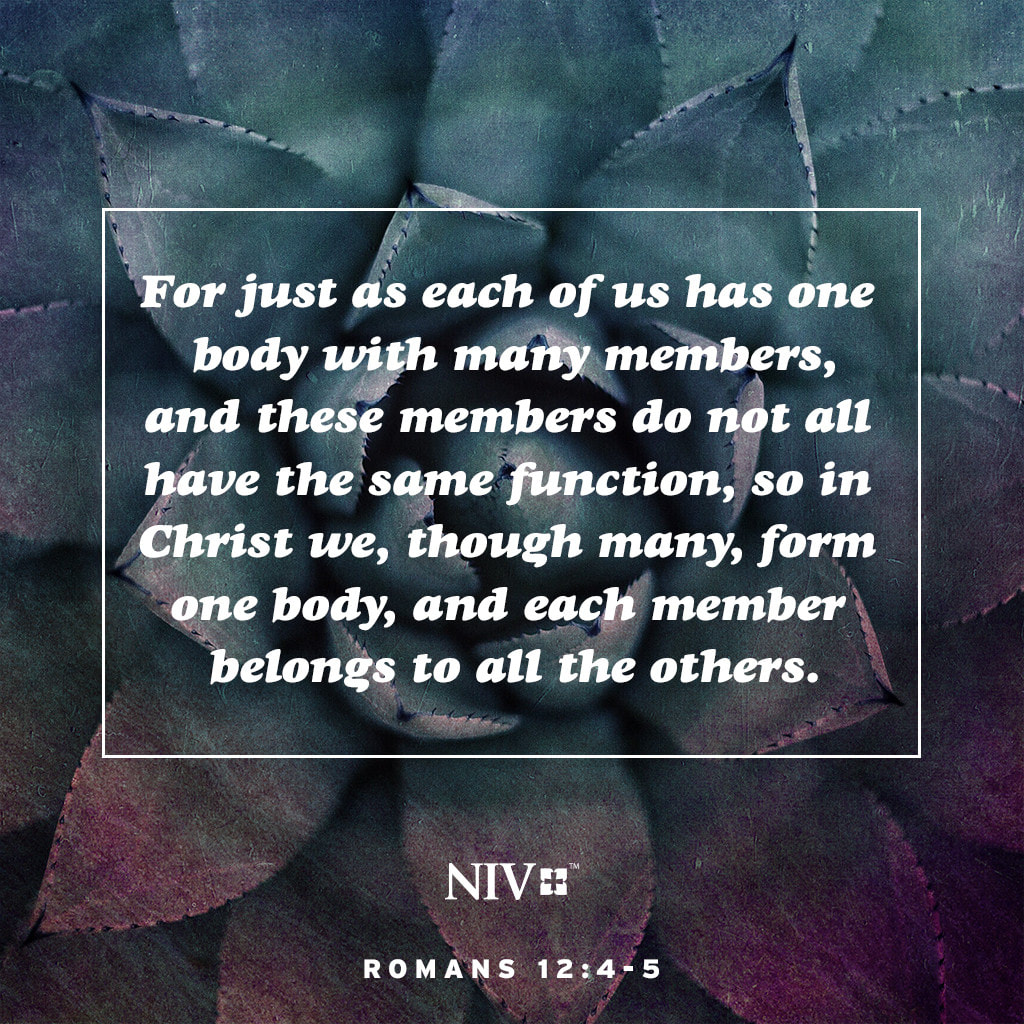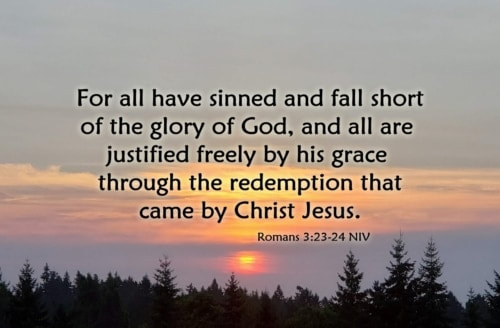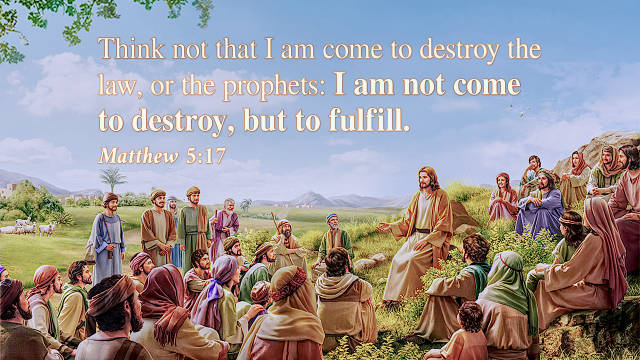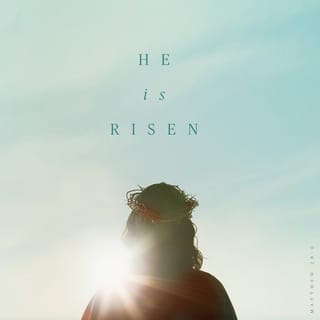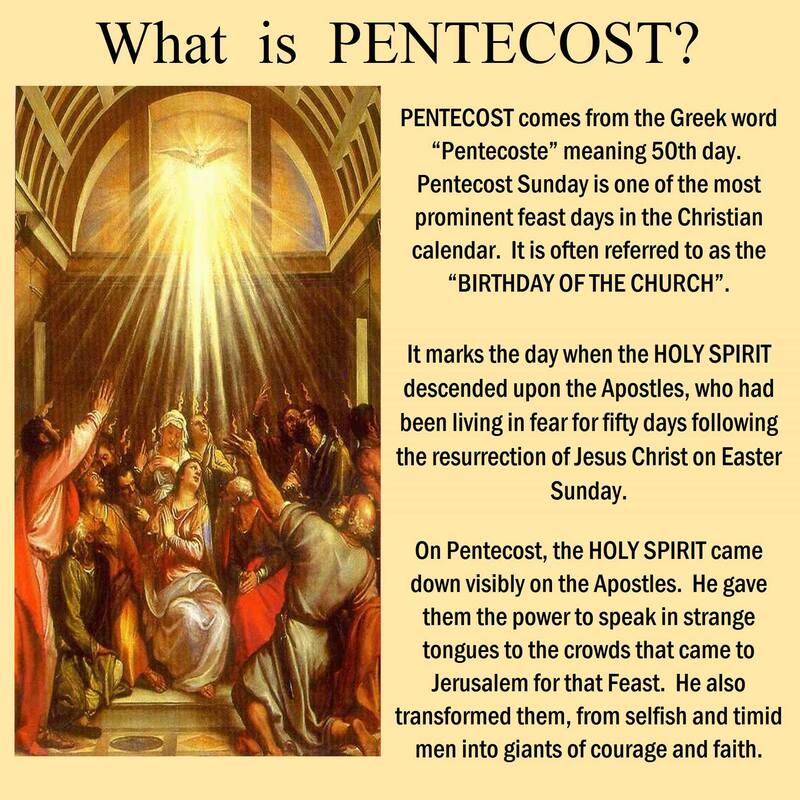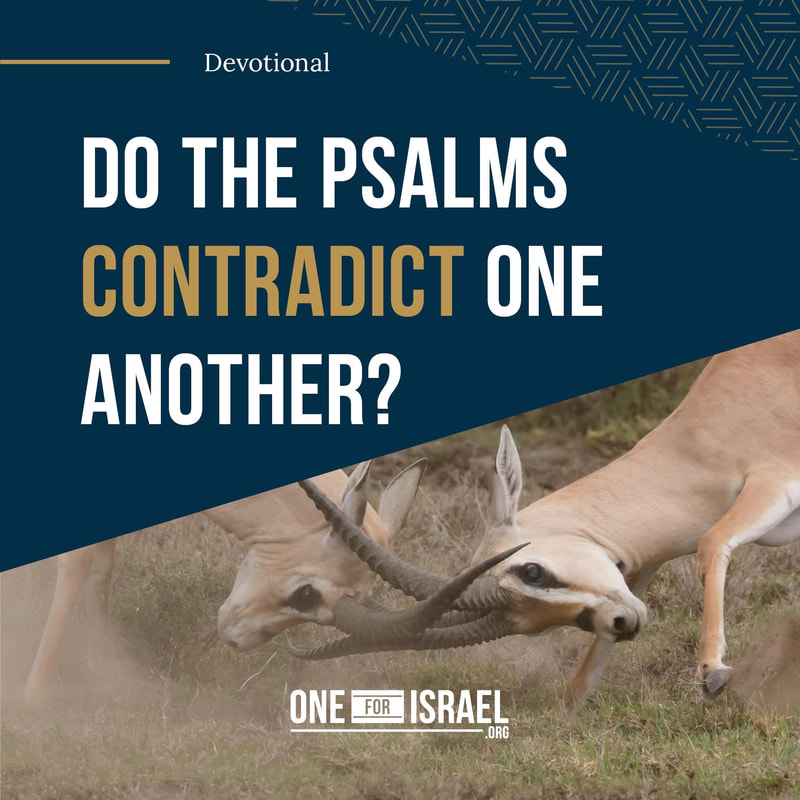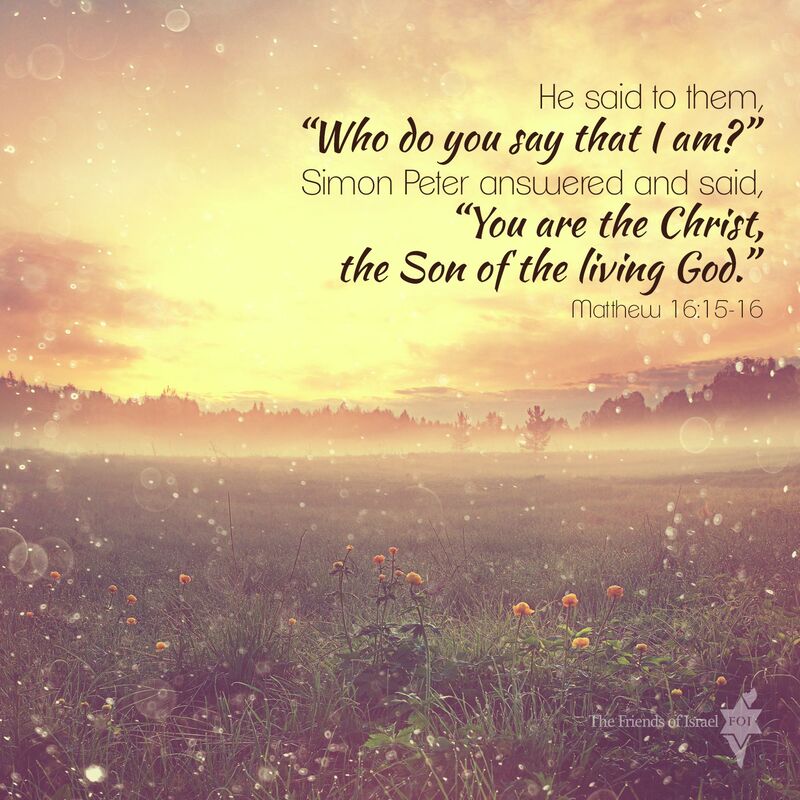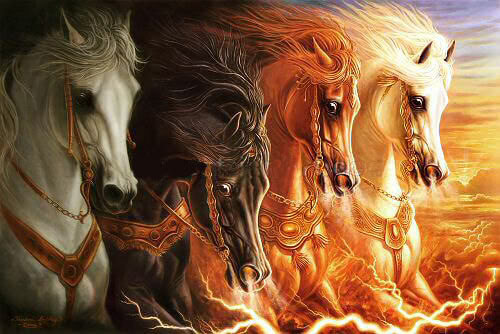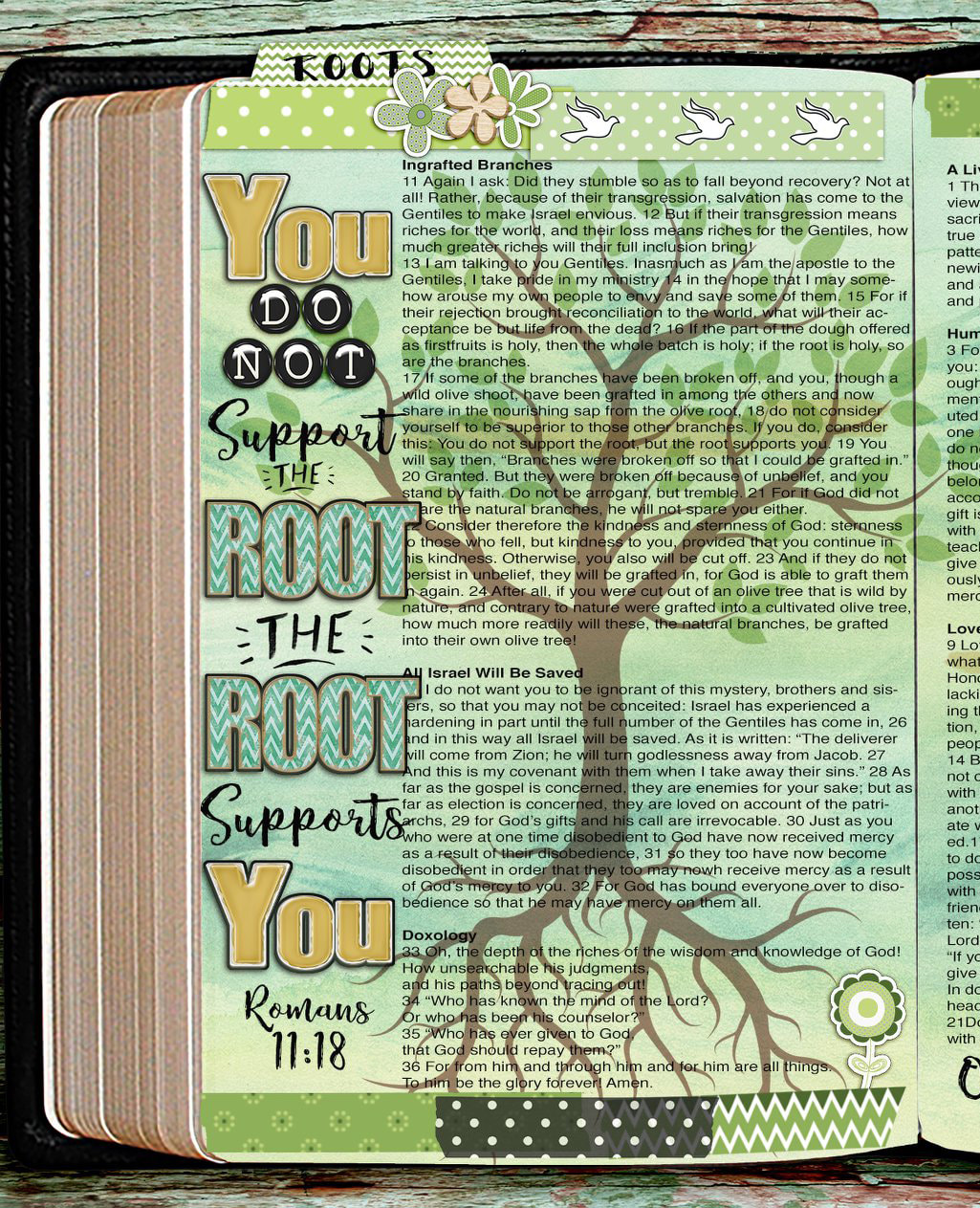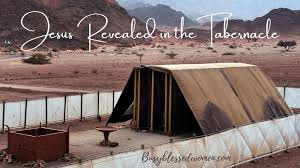Where are we
in God's Redemption Plan for humanity?
Closer than We'd venture to Say
Dispensationalism is a method of interpreting history that divides God’s work and purposes toward mankind into different periods of time. Usually, there are seven dispensations identified, we will limit ourselves to the seven basic dispensations found in Scripture.
The first dispensation is called the Dispensation of Innocence (Genesis 1:28-30 and 2:15-17). This dispensation covered the period of Adam and Eve in the Garden of Eden. In this dispensation God’s commands were to (1) fill the earth with children, (2) subdue the earth, (3) have dominion over the animals, (4) care for the garden, and
(5) abstain from eating the fruit from the tree of knowledge of good and evil. God warned of the punishment of physical and spiritual death for disobedience. This dispensation came to an end when Adam and Eve disobeyed in eating the forbidden fruit and were expelled from the garden.
The second dispensation is called the Dispensation of Conscience, and it lasted about 1,656 years from the time of Adam and Eve’s eviction from the garden until the flood (Genesis 3:8–8:22). This dispensation demonstrates what mankind will do if left to his own will and conscience, which have been tainted by the inherited sin nature. The five major aspects of this dispensation are 1) a curse on the serpent, 2) a change in womanhood and childbearing, 3) a curse on nature, 4) the imposing of difficult work on mankind to produce food, and
5) the promise of Christ as the seed who will bruise the serpent’s head (Satan).
The third dispensation is the Dispensation of Human Government, which began in Genesis 8. God had destroyed life on earth with a flood, saving just one family to restart the human race.
God made the following promises and commands to Noah and his family:
1. God will not curse the earth again.
2. Noah and family are to replenish the earth with people.
3. They shall have dominion over the animal creation.
4. They are allowed to eat meat.
5. The law of capital punishment is established.
6. There never will be another worldwide flood.
7. The sign of God’s promise will be the rainbow.
Noah’s descendants did not scatter and fill the earth as God had commanded, thus failing in their responsibility in this dispensation. About 325 years after the flood, the earth’s inhabitants began building a tower, a great monument to their solidarity and pride (Genesis 11:7-9).
God brought the construction to a halt, creating different languages and enforcing His command to fill the earth. The result was the rise of different nations and cultures.
From that point on, human governments have been a reality.
The fourth dispensation, called the Dispensation of Promise, started with the call of Abraham, continued through the lives of the patriarchs, and ended with the Exodus of the Jewish people from Egypt, a period of about 430 years. During this dispensation God developed a great nation that He had chosen as His people (Genesis 12:1–Exodus 19:25).
The basic promise during the Dispensation of Promise was the Abrahamic Covenant.
Here are some of the key points of that unconditional covenant:
1. From Abraham would come a great nation that God would bless with natural and spiritual prosperity.
2. God would make Abraham’s name great.
3. God would bless those that blessed Abraham’s descendants and curse those that cursed them.
4. In Abraham all the families of the earth will be blessed. This is fulfilled in Jesus Christ and His work of salvation.
5. The sign of the covenant is circumcision.
6. This covenant, which was repeated to Isaac and Jacob, is confined to the Hebrew people and the 12 tribes of Israel.
The fifth dispensation is called the Dispensation of Law. It lasted almost 1,500 years, from the Exodus until it was suspended after Jesus Christ’s death. This dispensation will continue during the Millennium, with some modifications. During the Dispensation of Law, God dealt specifically with the Jewish nation through the Mosaic Covenant, or the Law, found in Exodus 19–23. The dispensation involved temple worship directed by priests, with further direction spoken through God’s mouthpieces, the prophets.
Eventually, due to the people’s disobedience to the covenant,
the tribes of Israel lost the Promised Land and were subjected to bondage.
The sixth dispensation, the one in which we now live, is the Dispensation of Grace. It began with the New Covenant in Christ’s blood (Luke 22:20). This “Age of Grace” or “Church Age” occurs between the 69th and 70th week of Daniel 9:24. It starts with the coming of the Spirit on the Day of Pentecost and ends with the Rapture of the church (1 Thessalonians 4). This dispensation is worldwide and includes both Jews and the Gentiles. Man’s responsibility during the Dispensation of Grace is to believe in Jesus, the Son of God (John 3:18). In this dispensation the Holy Spirit indwells believers as the Comforter (John 14:16-26). This dispensation has lasted for almost 2,000 years, and no one knows when it will end. We do know that it will end with the Rapture of all born-again believers from the earth to go to heaven with Christ. Following the Rapture will be the judgments of God lasting for seven years.
After God had created the Hebrew people, He gave them the Law through Moses (the dispensation of Law). God’s people consistently broke the commandments, but the Law was finally fulfilled in Christ. The Lord then established the dispensation of Grace. God’s unmerited favor would finally allow His chosen people (believing Jews and Gentiles) to have lasting fellowship with Him.
Responsibility: To be perfected by sanctification; to love one another; to exhibit ever-increasing godliness (1 Thessalonians 4:3; 2 John 1:5)
Failure: A lack of maturity; worldliness; many churches falling into apostasy (Galatians 5:4; 2 Timothy 3:1-5)
Judgment: The blindness of apostasy and false doctrine (2 Thessalonians 2:3; 2 Timothy 4:3)
Grace: Forgiveness of sins through Christ Jesus (1 John 1:3-7; John 14:20)
This dispensation of Grace is often referred to as the Church Age because it is during this era that Jesus is building His Church (Matthew 16:18). It began at Pentecost (Acts 2) and will end when all who are born again by the baptism of the Holy Spirit are raptured out of this world to be with Jesus Himself (1 Thessalonians 4:13-18). The Church is mentioned again in Revelation 19 as returning to earth with the Lord Jesus at His Second Coming.
Grace is God’s benevolence to the undeserving. Grace is the rule of life for the Church, and through the Church God’s grace is extended to the whole world, as the gospel of Jesus Christ is taken to the ends of the earth. It has been said that grace saved us (Ephesians 2:8-9), it supports us (Romans 5:2), it teaches us (Titus 2:11-12), and it disciplines us (1 Corinthians 11:28-32; Hebrews 12:5-11). With the Holy Spirit indwelling His Church, we are able to walk with the Lord and live as He intends (Philippians 2:13; Ephesians 2:10; 5:17-18; Philippians 1:6; 4:13; Romans 8:14).
It is not heaven yet, and it is far short of perfection, but as the Church is being sanctified, it provides a little taste of heaven on earth (Ephesians 2:21-22).
Three Periods-are distinguished in the present dispensation of Grace. They are as follows:
A careful study of these three periods, within the dispensation of Grace, will bring to our attention:
Even though three distinct periods of ministry are recognized during this present age of grace, we must understand that only two different companies of saints are dealt with. The first and the last of these three different periods of the Holy Spirit’s ministry is directed toward national Israel, while the middle period of His ministry is given to the church, which is the Body of Christ.
In other words, the present mystery dispensation is a parenthetical period which fits in between God’s dealings with national Israel during the Acts period and His dealings with national Israel during the tribulation period.
There is no set day when this “Mystery” Dispensation began and there is no set day when it shall end. However, it is clear that Paul was the very first man to receive the truth concerning the mystery; therefore it seems incredible that it could have had its beginning, except in the mind of God, prior to the revelation made known to Paul. God may have given the Body truth to Paul before He moved upon Paul to write it down for our learning, but the Word plainly says that the dispensation of the mystery was “hid from ages and from generations” prior to Paul’s day (Colossians 1:25-26).
A Detailed Study of the Three Periods-mentioned above will help us to rightly divide the Word of truth on the subjects of miracles, signs and wonders; water baptism, the Lord’s supper, anointing with oil, divine healing, etc.
The Holy Spirit does not give the same message to National Israel during the Acts period and the tribulation period as that which He gives to the Body of Christ between these two periods.
The hope and calling of Israel are not the same as that of the Body of Christ. That which God offered to Israel through the Holy Spirit during the Acts period was rejected by the nation and is therefore withdrawn until after the completion of the Body of Christ.
This is why it is impossible to make the external things, which are associated with the Kingdom message of the Acts period and the tribulation period fit into the “Mystery of the gospel” (Ephesians 6:19) revealed through Paul.
The seventh dispensation is called the Millennial Kingdom of Christ and will last for 1,000 years as Christ Himself rules on earth. This Kingdom will fulfill the prophecy to the Jewish nation that Christ will return and be their King. The only people allowed to enter the Kingdom are the born-again believers from the Age of Grace, righteous survivors of the seven years of tribulation, and the resurrected Old Testament saints. No unsaved person is allowed access into this kingdom. Satan is bound during the 1,000 years. This period ends with the final judgment (Revelation 20:11-14).
The old world is destroyed by fire, and the New Heaven and New Earth
of Revelation 21 and 22 will begin.
Many Biblical scholars say the Assumption is in the Bible because Mary is the woman John sees in heaven that is described in Revelation 12. Protestants often counter this claim by accusing Catholics of shoehorning Mary into a text that is actually talking about the Church or the people of Israel.
So who is right? In one sense, both.
But before I explain how that could be, I need to remind Catholics
that we are not Protestant. Challenges that we must “prove” all Catholic doctrine from scripture shouldn’t worry us because we reject the unbiblical doctrine of sola scriptura.
When Cardinal Newman preached on the Mary’s Assumption and Immaculate Conception he gave evidence for those doctrines but he also said
“I am not proving these doctrines to you, my brethren;
the evidence of them lies in the declaration of the Church.
The Church is the oracle of religious truth,
and dispenses what the apostles committed to her
in every time and place.”
A plausible case can be made, however, that the Bible “reflects” the doctrine of the Assumption and that evidence for this dogma is implicitly found in John’s description of the woman in Revelation 12:1-6. This isn’t enough to prove Mary was assumed into heaven, but it does cohere with prior belief in Mary’s assumption and provides additional support for that claim. So let’s examine what John says about this woman and consider the possible symbolism:
And a great portent appeared in heaven, a woman clothed with the sun, with the moon under her feet, and on her head a crown of twelve stars; she was with
child and she cried out in her pangs of birth, in anguish for delivery.
And another portent appeared in heaven; behold, a great red dragon, with seven heads and ten horns, and seven diadems upon his heads. His tail swept down a third of the stars of heaven, and cast them to the earth. And the dragon stood before the woman who was about to bear a child, that he might devour her child when she brought it forth; she brought forth a male child, one who is to rule all the nations with a rod of iron, but her child was caught up to God and to his throne, and the woman fled into the wilderness,
where she has a place prepared by God, in which to be nourished for one thousand two hundred and sixty days.
Most of Revelation’s symbols have multiple associations or meanings and …
This is common in Biblical imagery.
For example, some Protestants say Peter is not the rock in Matthew 16:18 by pointing to Church fathers who identify the rock with Peter’s confession of Faith.
But the Catechismsays the Rock symbolizes both
Peter’s confession of Faith (424) and Peter himself (881). Likewise, when it comes to the woman in Revelation 12, there is no contradiction in saying the woman represents Mary.
“This figure is both the literal mother of the male child Jesus and also the female image of the people of God (Israel) Again, the text is multivalent!”
"If not only Mary, the woman is also Mary [emphasis added],
Mary as eschatos in a line of miracle mothers,
as the embodiment of the virginity of Israel’s labor,
all of it necessary to form Christ in this world.”
Most biblical scholars see the woman in Revelation 12 as having connection
with bringing about the birth of the Messiah. As a result, they see her as
representing the people of God who preceded the Messiah,
which includes Mary, Israel, and even Eve.
Scholars also believe this woman represents the Church,
who gives birth to the people of the New Covenant.
The multiplicity of meanings in the passage answers several common objections to
Mary being identified with this woman “clothed with the sun.”
For example, some critics say the woman’s experience of birth pangs conflicts with the long-standing belief that Mary (who was conceived without original sin) did not
experience one of its punishments in the form of painful childbirth
(Gen. 3:16).
But these “birth pangs” could refer to Mary’s trials before the birth of Jesus,
the pain she felt at the Cross, during which she became a spiritual mother to John
(and by extension all believers),
and the pain experienced by the people of God both before
the Messiah’s birth and after his resurrection during Roman persecution.
However, N.T. Wright says of this woman “she is a ‘sign,’ not a literal mother.”
In response, we can note that John also describes “the great red dragon” in this passage as being a “sign” (Greek: semeion) but nearly all commenters agree the dragon represents an individual: Satan. Indeed, as Tim Staples notes, “There are four main characters in the chapter: “the woman,” the devil, Jesus, and the Archangel Michael. No one denies that the other three mentioned are real persons. It fits the context exegetically to interpret ‘the woman’ as a person (Mary) as well.” Wright even says, “It is from this faithful Israel, admittedly ultimately through the ‘virgin daughter of Israel,’ Mary herself, that the messiah is born.”
We should also note that in John’s gospel Jesus’ mother is never called “Mary.” Jesus never even calls her “mother,” but refers instead to her as “woman” (John 2:4, 19:27). The Church fathers saw in this language a reference to Mary being the New Eve who is also called “woman”
(Hebrew: Ishah) in Genesis until after the Fall when Adam names her “Eve”
(Hebrew: Ḥawwāh).
The Council of Laodicea and Cyril of Jerusalem did not include Revelation in their canonical lists. In A.D. 330 the Church historian Eusebius said of it “Among the rejected writings must be reckoned, as I said, the Apocalypse of John, if it seem proper, which some, as I said, reject, but which others class with the accepted books.” If the early Church viewed Revelation as a Jewish text, then it makes sense they would not see Mary in it as vividly as they might see other Old Testament motifs until the text was more widely accepted in the early Church.
scholars like William Barclay and Larry Heyler admit the suggestion the woman in Revelation 12 is Mary is an “obvious” one to make. They only hesitate to do so because they believe this woman can’t only refer to Mary.; biblical Scholars would agree this woman is symbolic of many separate things and people, but they would also be prepared to go one step further and say Mary herself, in virtue of being the mother of God, is that fitting symbol.
For example, St. Methodius said the woman was
according to the accurate interpretation, our mother, O virgins, being a power by herself distinct from her children; whom the prophets, according to the aspect of their subjects,
have called sometimes Jerusalem, sometimes a Bride, sometimes Mount Zion,
and sometimes the Temple and Tabernacle of God.
It makes sense that later Christians saw how concepts like “Israel” or “the Church,”
(which Methodius identifies with terms like “mother”, “virgin,” “Temple,”
and “tabernacle of God”) are perfectly symbolized in the person of Mary, or as Heyler puts it, “
the Virgin Mary typifies or embodies the true people of God.”
Mary is the ever-virgin, mother of God, mother of all believers and Ark of the New Covenant who stands in contrast with the Ark of the Old Covenant
that is also depicted as being in heaven in the preceding verse (Rev. 11:19).
“As part of the New Testament canon, Revelation’s depiction of the heavenly woman completes the biblical Marian material.”
If this woman symbolizes Mary or, as we’ve seen can be plausibly claimed, this woman isMary, then the belief that Jesus took his mother into heaven to reign with him becomes even more reasonable and the testimony of Scripture would serve as an implicit corroboration of this sublime mystery of our Faith.
in God's Redemption Plan for humanity?
Closer than We'd venture to Say
Dispensationalism is a method of interpreting history that divides God’s work and purposes toward mankind into different periods of time. Usually, there are seven dispensations identified, we will limit ourselves to the seven basic dispensations found in Scripture.
The first dispensation is called the Dispensation of Innocence (Genesis 1:28-30 and 2:15-17). This dispensation covered the period of Adam and Eve in the Garden of Eden. In this dispensation God’s commands were to (1) fill the earth with children, (2) subdue the earth, (3) have dominion over the animals, (4) care for the garden, and
(5) abstain from eating the fruit from the tree of knowledge of good and evil. God warned of the punishment of physical and spiritual death for disobedience. This dispensation came to an end when Adam and Eve disobeyed in eating the forbidden fruit and were expelled from the garden.
The second dispensation is called the Dispensation of Conscience, and it lasted about 1,656 years from the time of Adam and Eve’s eviction from the garden until the flood (Genesis 3:8–8:22). This dispensation demonstrates what mankind will do if left to his own will and conscience, which have been tainted by the inherited sin nature. The five major aspects of this dispensation are 1) a curse on the serpent, 2) a change in womanhood and childbearing, 3) a curse on nature, 4) the imposing of difficult work on mankind to produce food, and
5) the promise of Christ as the seed who will bruise the serpent’s head (Satan).
The third dispensation is the Dispensation of Human Government, which began in Genesis 8. God had destroyed life on earth with a flood, saving just one family to restart the human race.
God made the following promises and commands to Noah and his family:
1. God will not curse the earth again.
2. Noah and family are to replenish the earth with people.
3. They shall have dominion over the animal creation.
4. They are allowed to eat meat.
5. The law of capital punishment is established.
6. There never will be another worldwide flood.
7. The sign of God’s promise will be the rainbow.
Noah’s descendants did not scatter and fill the earth as God had commanded, thus failing in their responsibility in this dispensation. About 325 years after the flood, the earth’s inhabitants began building a tower, a great monument to their solidarity and pride (Genesis 11:7-9).
God brought the construction to a halt, creating different languages and enforcing His command to fill the earth. The result was the rise of different nations and cultures.
From that point on, human governments have been a reality.
The fourth dispensation, called the Dispensation of Promise, started with the call of Abraham, continued through the lives of the patriarchs, and ended with the Exodus of the Jewish people from Egypt, a period of about 430 years. During this dispensation God developed a great nation that He had chosen as His people (Genesis 12:1–Exodus 19:25).
The basic promise during the Dispensation of Promise was the Abrahamic Covenant.
Here are some of the key points of that unconditional covenant:
1. From Abraham would come a great nation that God would bless with natural and spiritual prosperity.
2. God would make Abraham’s name great.
3. God would bless those that blessed Abraham’s descendants and curse those that cursed them.
4. In Abraham all the families of the earth will be blessed. This is fulfilled in Jesus Christ and His work of salvation.
5. The sign of the covenant is circumcision.
6. This covenant, which was repeated to Isaac and Jacob, is confined to the Hebrew people and the 12 tribes of Israel.
The fifth dispensation is called the Dispensation of Law. It lasted almost 1,500 years, from the Exodus until it was suspended after Jesus Christ’s death. This dispensation will continue during the Millennium, with some modifications. During the Dispensation of Law, God dealt specifically with the Jewish nation through the Mosaic Covenant, or the Law, found in Exodus 19–23. The dispensation involved temple worship directed by priests, with further direction spoken through God’s mouthpieces, the prophets.
Eventually, due to the people’s disobedience to the covenant,
the tribes of Israel lost the Promised Land and were subjected to bondage.
The sixth dispensation, the one in which we now live, is the Dispensation of Grace. It began with the New Covenant in Christ’s blood (Luke 22:20). This “Age of Grace” or “Church Age” occurs between the 69th and 70th week of Daniel 9:24. It starts with the coming of the Spirit on the Day of Pentecost and ends with the Rapture of the church (1 Thessalonians 4). This dispensation is worldwide and includes both Jews and the Gentiles. Man’s responsibility during the Dispensation of Grace is to believe in Jesus, the Son of God (John 3:18). In this dispensation the Holy Spirit indwells believers as the Comforter (John 14:16-26). This dispensation has lasted for almost 2,000 years, and no one knows when it will end. We do know that it will end with the Rapture of all born-again believers from the earth to go to heaven with Christ. Following the Rapture will be the judgments of God lasting for seven years.
After God had created the Hebrew people, He gave them the Law through Moses (the dispensation of Law). God’s people consistently broke the commandments, but the Law was finally fulfilled in Christ. The Lord then established the dispensation of Grace. God’s unmerited favor would finally allow His chosen people (believing Jews and Gentiles) to have lasting fellowship with Him.
Responsibility: To be perfected by sanctification; to love one another; to exhibit ever-increasing godliness (1 Thessalonians 4:3; 2 John 1:5)
Failure: A lack of maturity; worldliness; many churches falling into apostasy (Galatians 5:4; 2 Timothy 3:1-5)
Judgment: The blindness of apostasy and false doctrine (2 Thessalonians 2:3; 2 Timothy 4:3)
Grace: Forgiveness of sins through Christ Jesus (1 John 1:3-7; John 14:20)
This dispensation of Grace is often referred to as the Church Age because it is during this era that Jesus is building His Church (Matthew 16:18). It began at Pentecost (Acts 2) and will end when all who are born again by the baptism of the Holy Spirit are raptured out of this world to be with Jesus Himself (1 Thessalonians 4:13-18). The Church is mentioned again in Revelation 19 as returning to earth with the Lord Jesus at His Second Coming.
Grace is God’s benevolence to the undeserving. Grace is the rule of life for the Church, and through the Church God’s grace is extended to the whole world, as the gospel of Jesus Christ is taken to the ends of the earth. It has been said that grace saved us (Ephesians 2:8-9), it supports us (Romans 5:2), it teaches us (Titus 2:11-12), and it disciplines us (1 Corinthians 11:28-32; Hebrews 12:5-11). With the Holy Spirit indwelling His Church, we are able to walk with the Lord and live as He intends (Philippians 2:13; Ephesians 2:10; 5:17-18; Philippians 1:6; 4:13; Romans 8:14).
It is not heaven yet, and it is far short of perfection, but as the Church is being sanctified, it provides a little taste of heaven on earth (Ephesians 2:21-22).
Three Periods-are distinguished in the present dispensation of Grace. They are as follows:
- From the crucifixion to the setting aside of National Israel (Acts 28:28).
- From the setting aside of National Israel to the catching up of the Body of Christ (Philippians 3:20-21).
- From the catching up of the Church which is Christ’s Body to the return of Christ in glory (Revelation 19:11-16).
A careful study of these three periods, within the dispensation of Grace, will bring to our attention:
- God’s dealings with National Israel during the book of Acts period, or the first period mentioned above.
- God’s dealings with the Church, which is the Body of Christ, or the period in which we are now living, the second period mentioned above.
- God’s dealings with Israel and the nations during the Great Tribulation period, which will follow immediately after the catching up of the Body, or the third period mentioned above.
Even though three distinct periods of ministry are recognized during this present age of grace, we must understand that only two different companies of saints are dealt with. The first and the last of these three different periods of the Holy Spirit’s ministry is directed toward national Israel, while the middle period of His ministry is given to the church, which is the Body of Christ.
In other words, the present mystery dispensation is a parenthetical period which fits in between God’s dealings with national Israel during the Acts period and His dealings with national Israel during the tribulation period.
There is no set day when this “Mystery” Dispensation began and there is no set day when it shall end. However, it is clear that Paul was the very first man to receive the truth concerning the mystery; therefore it seems incredible that it could have had its beginning, except in the mind of God, prior to the revelation made known to Paul. God may have given the Body truth to Paul before He moved upon Paul to write it down for our learning, but the Word plainly says that the dispensation of the mystery was “hid from ages and from generations” prior to Paul’s day (Colossians 1:25-26).
A Detailed Study of the Three Periods-mentioned above will help us to rightly divide the Word of truth on the subjects of miracles, signs and wonders; water baptism, the Lord’s supper, anointing with oil, divine healing, etc.
The Holy Spirit does not give the same message to National Israel during the Acts period and the tribulation period as that which He gives to the Body of Christ between these two periods.
The hope and calling of Israel are not the same as that of the Body of Christ. That which God offered to Israel through the Holy Spirit during the Acts period was rejected by the nation and is therefore withdrawn until after the completion of the Body of Christ.
This is why it is impossible to make the external things, which are associated with the Kingdom message of the Acts period and the tribulation period fit into the “Mystery of the gospel” (Ephesians 6:19) revealed through Paul.
The seventh dispensation is called the Millennial Kingdom of Christ and will last for 1,000 years as Christ Himself rules on earth. This Kingdom will fulfill the prophecy to the Jewish nation that Christ will return and be their King. The only people allowed to enter the Kingdom are the born-again believers from the Age of Grace, righteous survivors of the seven years of tribulation, and the resurrected Old Testament saints. No unsaved person is allowed access into this kingdom. Satan is bound during the 1,000 years. This period ends with the final judgment (Revelation 20:11-14).
The old world is destroyed by fire, and the New Heaven and New Earth
of Revelation 21 and 22 will begin.
Many Biblical scholars say the Assumption is in the Bible because Mary is the woman John sees in heaven that is described in Revelation 12. Protestants often counter this claim by accusing Catholics of shoehorning Mary into a text that is actually talking about the Church or the people of Israel.
So who is right? In one sense, both.
But before I explain how that could be, I need to remind Catholics
that we are not Protestant. Challenges that we must “prove” all Catholic doctrine from scripture shouldn’t worry us because we reject the unbiblical doctrine of sola scriptura.
When Cardinal Newman preached on the Mary’s Assumption and Immaculate Conception he gave evidence for those doctrines but he also said
“I am not proving these doctrines to you, my brethren;
the evidence of them lies in the declaration of the Church.
The Church is the oracle of religious truth,
and dispenses what the apostles committed to her
in every time and place.”
A plausible case can be made, however, that the Bible “reflects” the doctrine of the Assumption and that evidence for this dogma is implicitly found in John’s description of the woman in Revelation 12:1-6. This isn’t enough to prove Mary was assumed into heaven, but it does cohere with prior belief in Mary’s assumption and provides additional support for that claim. So let’s examine what John says about this woman and consider the possible symbolism:
And a great portent appeared in heaven, a woman clothed with the sun, with the moon under her feet, and on her head a crown of twelve stars; she was with
child and she cried out in her pangs of birth, in anguish for delivery.
And another portent appeared in heaven; behold, a great red dragon, with seven heads and ten horns, and seven diadems upon his heads. His tail swept down a third of the stars of heaven, and cast them to the earth. And the dragon stood before the woman who was about to bear a child, that he might devour her child when she brought it forth; she brought forth a male child, one who is to rule all the nations with a rod of iron, but her child was caught up to God and to his throne, and the woman fled into the wilderness,
where she has a place prepared by God, in which to be nourished for one thousand two hundred and sixty days.
Most of Revelation’s symbols have multiple associations or meanings and …
This is common in Biblical imagery.
For example, some Protestants say Peter is not the rock in Matthew 16:18 by pointing to Church fathers who identify the rock with Peter’s confession of Faith.
But the Catechismsays the Rock symbolizes both
Peter’s confession of Faith (424) and Peter himself (881). Likewise, when it comes to the woman in Revelation 12, there is no contradiction in saying the woman represents Mary.
“This figure is both the literal mother of the male child Jesus and also the female image of the people of God (Israel) Again, the text is multivalent!”
"If not only Mary, the woman is also Mary [emphasis added],
Mary as eschatos in a line of miracle mothers,
as the embodiment of the virginity of Israel’s labor,
all of it necessary to form Christ in this world.”
Most biblical scholars see the woman in Revelation 12 as having connection
with bringing about the birth of the Messiah. As a result, they see her as
representing the people of God who preceded the Messiah,
which includes Mary, Israel, and even Eve.
Scholars also believe this woman represents the Church,
who gives birth to the people of the New Covenant.
The multiplicity of meanings in the passage answers several common objections to
Mary being identified with this woman “clothed with the sun.”
For example, some critics say the woman’s experience of birth pangs conflicts with the long-standing belief that Mary (who was conceived without original sin) did not
experience one of its punishments in the form of painful childbirth
(Gen. 3:16).
But these “birth pangs” could refer to Mary’s trials before the birth of Jesus,
the pain she felt at the Cross, during which she became a spiritual mother to John
(and by extension all believers),
and the pain experienced by the people of God both before
the Messiah’s birth and after his resurrection during Roman persecution.
However, N.T. Wright says of this woman “she is a ‘sign,’ not a literal mother.”
In response, we can note that John also describes “the great red dragon” in this passage as being a “sign” (Greek: semeion) but nearly all commenters agree the dragon represents an individual: Satan. Indeed, as Tim Staples notes, “There are four main characters in the chapter: “the woman,” the devil, Jesus, and the Archangel Michael. No one denies that the other three mentioned are real persons. It fits the context exegetically to interpret ‘the woman’ as a person (Mary) as well.” Wright even says, “It is from this faithful Israel, admittedly ultimately through the ‘virgin daughter of Israel,’ Mary herself, that the messiah is born.”
We should also note that in John’s gospel Jesus’ mother is never called “Mary.” Jesus never even calls her “mother,” but refers instead to her as “woman” (John 2:4, 19:27). The Church fathers saw in this language a reference to Mary being the New Eve who is also called “woman”
(Hebrew: Ishah) in Genesis until after the Fall when Adam names her “Eve”
(Hebrew: Ḥawwāh).
The Council of Laodicea and Cyril of Jerusalem did not include Revelation in their canonical lists. In A.D. 330 the Church historian Eusebius said of it “Among the rejected writings must be reckoned, as I said, the Apocalypse of John, if it seem proper, which some, as I said, reject, but which others class with the accepted books.” If the early Church viewed Revelation as a Jewish text, then it makes sense they would not see Mary in it as vividly as they might see other Old Testament motifs until the text was more widely accepted in the early Church.
scholars like William Barclay and Larry Heyler admit the suggestion the woman in Revelation 12 is Mary is an “obvious” one to make. They only hesitate to do so because they believe this woman can’t only refer to Mary.; biblical Scholars would agree this woman is symbolic of many separate things and people, but they would also be prepared to go one step further and say Mary herself, in virtue of being the mother of God, is that fitting symbol.
For example, St. Methodius said the woman was
according to the accurate interpretation, our mother, O virgins, being a power by herself distinct from her children; whom the prophets, according to the aspect of their subjects,
have called sometimes Jerusalem, sometimes a Bride, sometimes Mount Zion,
and sometimes the Temple and Tabernacle of God.
It makes sense that later Christians saw how concepts like “Israel” or “the Church,”
(which Methodius identifies with terms like “mother”, “virgin,” “Temple,”
and “tabernacle of God”) are perfectly symbolized in the person of Mary, or as Heyler puts it, “
the Virgin Mary typifies or embodies the true people of God.”
Mary is the ever-virgin, mother of God, mother of all believers and Ark of the New Covenant who stands in contrast with the Ark of the Old Covenant
that is also depicted as being in heaven in the preceding verse (Rev. 11:19).
“As part of the New Testament canon, Revelation’s depiction of the heavenly woman completes the biblical Marian material.”
If this woman symbolizes Mary or, as we’ve seen can be plausibly claimed, this woman isMary, then the belief that Jesus took his mother into heaven to reign with him becomes even more reasonable and the testimony of Scripture would serve as an implicit corroboration of this sublime mystery of our Faith.








 RSS Feed
RSS Feed



